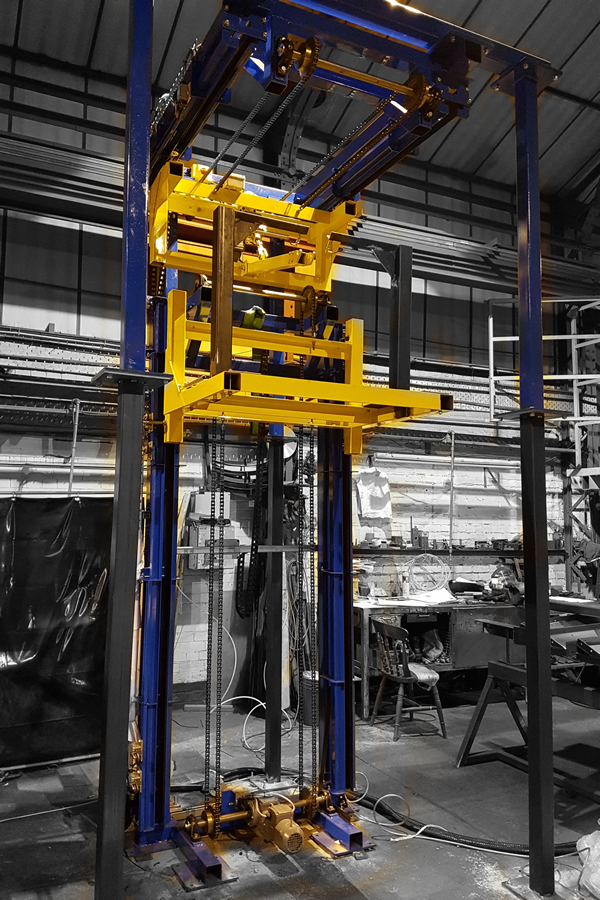We Maintain Lifts to the Greatest Standards: Reliable Service for All Lift Kind
We Maintain Lifts to the Greatest Standards: Reliable Service for All Lift Kind
Blog Article
Diving Into the World of Elevators: Common Issues Dealt With by Numerous Lift Systems
As we browse with the upright transport systems of modern-day structures, lifts stand out as an indispensable part of our everyday lives. From hydraulic elevators to grip systems and machine-room-less designs, each lift type comes with its collection of common issues.
Hydraulic Lifts
Hydraulic lifts, often chosen for low-rise buildings, utilize fluid pressure to regulate the activity of the lift cars and truck (lift repair companies). This mechanism involves a hydraulic pump pressing oil into a cyndrical tube, triggering the elevator to relocate the wanted instructions. While hydraulic lifts are recognized for their smooth and silent operation, they do come with their own collection of typical problems
One prevalent trouble with hydraulic lifts is oil leak. The seals in the hydraulic system can wear out with time, leading to oil seepage. This not only produces a mess yet can also affect the lift's performance if left unaddressed. Furthermore, issues with the control system, such as malfunctioning shutoffs or a malfunctioning pump, can cause disruptions in the elevator's activity.
Normal upkeep and prompt fixings are vital to ensure the smooth functioning of hydraulic elevators. By dealing with these usual concerns proactively, structure owners can lessen downtime and ensure the security and performance of their vertical transport system.
Traction Lifts
When thinking about upright transportation systems in structures, one more typical kind other than hydraulic lifts is the grip lift. Grip lifts operate using a system of ropes and weights that move the lift car by grasping onto the hoist ropes. This system enables for smoother and faster vertical transport compared to hydraulic systems.
One of the usual problems dealt with by traction elevators is rope wear. The continuous motion of the ropes within the traction system can lead to deterioration over time, possibly causing the elevator to malfunction or come to be unsafe for use. Routine inspections and maintenance of the ropes are important to make certain the lift's correct performance and safety and security.
One more issue that traction lifts might encounter is connected to the control system. Issues with the control system can bring about concerns such as erratic activity, delays in response times, or perhaps total shutdowns. Routine screening and upkeep of the control system are crucial to stop such concerns and ensure the lift's reliability.
Machine-Room-Less (MRL) Lifts

One of the key components of MRL elevators is the small gearless traction maker that is mounted within the hoistway. This device efficiently drives the lift cars and truck without the requirement for bulky equipment discovered in traditional traction elevators. Furthermore, MRL elevators commonly utilize a weight system to balance the car, further improving their energy performance.
Regardless of their advantages, MRL lifts might encounter obstacles related to repair and maintenance because of the restricted room for devices installation. Availability for servicing components within the shaft can be limited, needing specialized training for professionals. Proper maintenance timetables and normal evaluations are crucial to guarantee the continued smooth operation of MRL lifts.
Overloading and Weight Restriction Issues
Overloading and weight restriction concerns are critical problems in elevator procedures. Lift makers design lifts with specific weight capacities to make sure guest safety and devices long life.
When lifts are strained, it puts too much strain on the electric motor, wires, and various other elements, potentially triggering breakdowns or malfunctions. Security devices such as sensors and overload sensing units are in place to avoid elevators from moving if they find excess weight. Additionally, exceeding weight restrictions can result in increased power usage disabled platform lifts prices uk and damage on the elevator system.
To minimize overloading problems, constructing supervisors need to plainly show weight limits in elevators and inform owners on the value of sticking to these constraints - lift repair companies. Normal maintenance checks by qualified professionals can also aid make sure that lifts are running within risk-free weight parameters. By attending to overloading and weight restriction issues proactively, building owners can boost lift safety and security and effectiveness
Electrical System Failings
Going beyond weight limits in lifts can not only lead to mechanical issues but also potentially add to electrical system failures within the lift facilities. Electric system failures are a critical worry in elevator procedure, as they can create unanticipated closures, malfunctions, or even security threats.
Moreover, power rises or changes in the electrical supply can also interrupt the elevator's operation, influencing its performance and safety. These electrical disruptions can damage sensitive elevator parts such as control board, circuit card, or sensors, causing system failures. Routine maintenance and assessments are critical to identify and resolve possible electrical concerns immediately, ensuring the risk-free and effective operation of elevator systems. By sticking to weight limits and carrying out regular electric system checks, building proprietors can reduce the danger of electric failures in elevators.
Final Thought

Hydraulic lifts, frequently chosen for low-rise buildings, utilize fluid pressure to manage the movement of the lift automobile.When taking into consideration vertical transportation systems in structures, an additional typical kind aside from hydraulic lifts is the grip elevator. Grip lifts run making use of a system of ropes and counterweights that move the lift vehicle by clutching onto the hoist ropes. Unlike typical lifts that call for a different machine room disabled platform lifts prices uk to house the equipment, MRL elevators incorporate most of the components within the shaft, london lift company eliminating the need for a committed machine area.In final thought, elevators encounter typical issues such as hydraulic breakdowns, grip system failures, and electric system issues.
Report this page